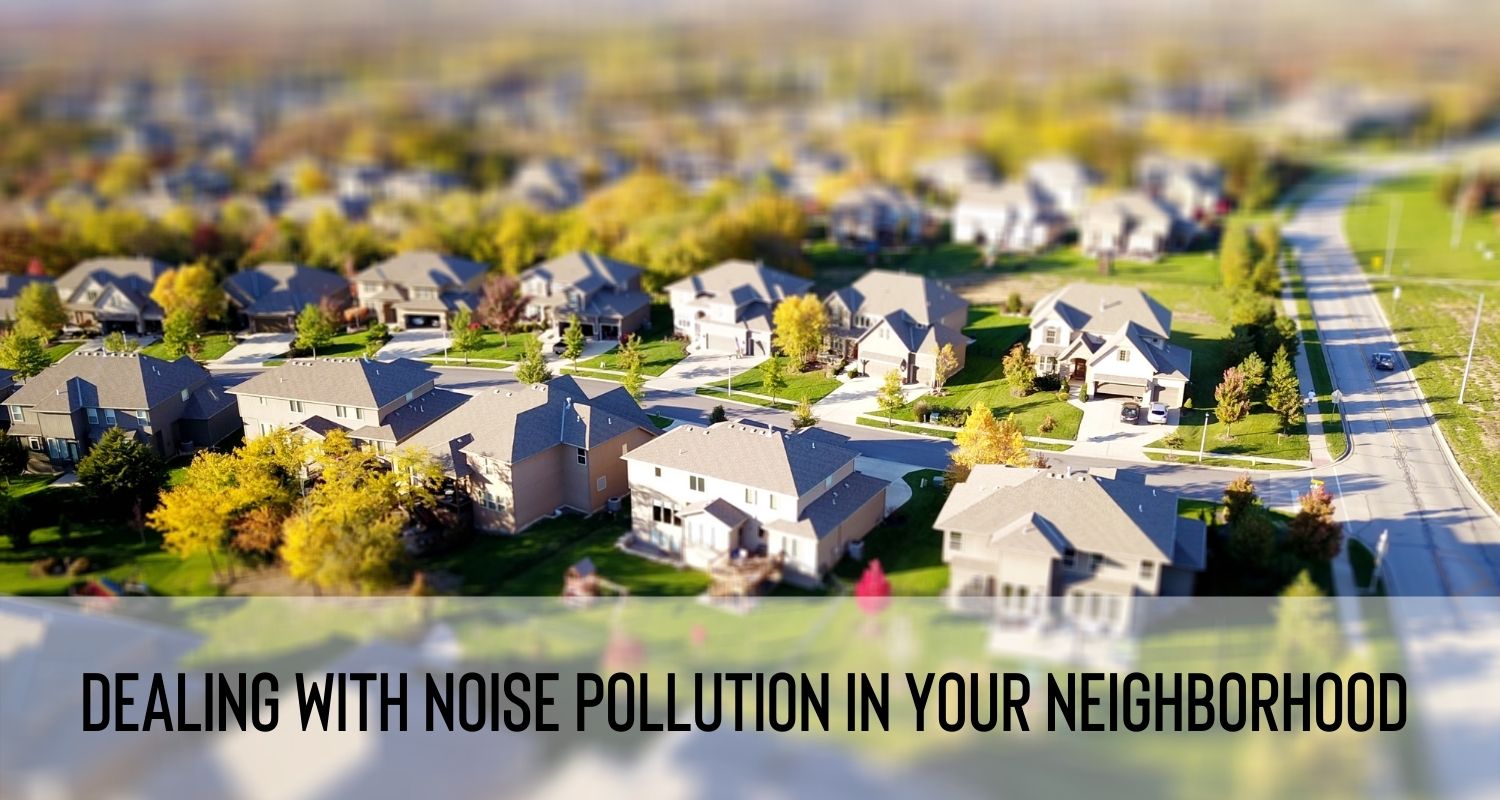Dealing with Noise Pollution in Your Neighborhood

We live in a world where environmental noise is a constant companion for many of us throughout the day and into the night. As a result of the increasingly loud sounds we hear daily, noise pollution poses a serious threat to our health.
It’s critical to know when noise pollution is present so you can take precautions to avoid long-term hearing damage and emotional effects like depression and anxiety.
Noise pollution and hearing loss
Noise pollution can cause permanent hearing loss. While noise-induced hearing loss can be prevented, it is also the most common type of hearing loss. Noise-induced hearing loss occurs when the delicate sensory cells in our ears are overworked and damaged by dangerous sound levels.
A sound wave travels through the air and enters our ear canal when something makes a sound. It must be picked up by “hair cells” in the inner ear to hear a sound, which detects vibrations. The brain can understand the electric signal produced by these cells when a sound wave is detected in the air. Our ability to hear with precision and nuance is mainly due to the many hair cells in our ears.
The problem is that these cells are so sensitive that they can be damaged when they are overworked to the point where they can no longer function properly. Because hair cells can’t repair or replace themselves like many other types of cells in the human body, damaged hair cells impair our ability to hear.
Measuring noise pollution
Decibels are the units used to quantify volume (dB). Human ears can detect a sound at a decibel level of 0 dB, while the average voice registers at 60 dB.
Around 75 dB – or about the volume of a typical vacuum cleaner – sounds start to be perceived as “loud” and potentially harmful to our hearing. As the sound volume rises, so does the risk of hearing damage. An unrelenting sound level of 75 dB can begin damaging our hearing after just 24 hours of continuous exposure to it. Noises that are too loud put us at risk of permanent hearing loss and damage to our hair cells.
Workers must be alert when the sound level rises above 85 decibels (dB). After 8 hours of continuous exposure to 85 dB, damage to the ear’s natural hearing occurs. Loud workplaces like factories, airports, construction sites, and repair shops have the potential to consistently expose employees to 85 dB of sound throughout an 8-hour work shift, and workers are entitled to hearing protection.
Sound levels that are even higher are even more dangerous. A typical rock concert has a sound level of around 100 dB, which can cause hearing damage in less than 15 minutes for most people. It is impossible to hear anything above 120 decibels (dB) without hearing protection, such as gunshots and firecrackers. You will feel pain in your ear when the sound level reaches 140 dB. (along with instant hearing permanent hearing damage).
Keeping track of noise pollution.
The ability to keep an eye on the volume of the noise around you has never been more convenient, even as the world around us becomes increasingly raucous. Use a decibel meter if you suspect that you’re constantly exposed to dangerous levels of noise. Useful decibel-metering apps like DecibelX are available for free and alert you to harmful noise pollution.
You need hearing protection if you are exposed to harmful noise in your daily life. You should consult a hearing specialist if you are regularly exposed to high sound levels. Hearing protection, such as reusable earplugs, can be prescribed by your hearing specialist to reduce your noise exposure.
Society as a whole can benefit from supporting noise regulation. Make noise reduction a priority in your neighborhood or city and support legislation that restricts the hours and volumes of noise.
Noise pollution can be reduced at the household level by purchasing quiet appliances, turning down the volume, and scheduling quiet periods throughout the day.
